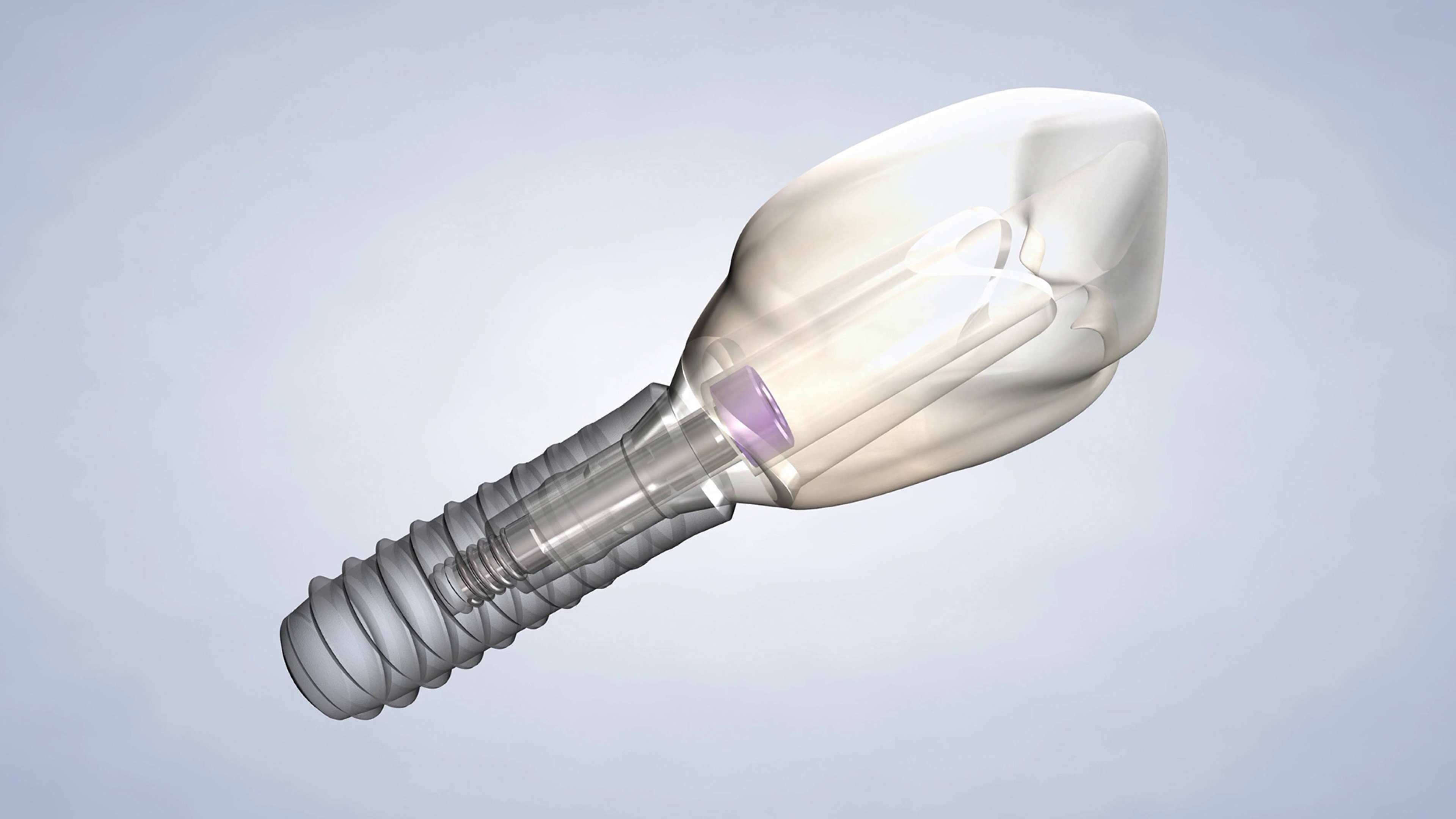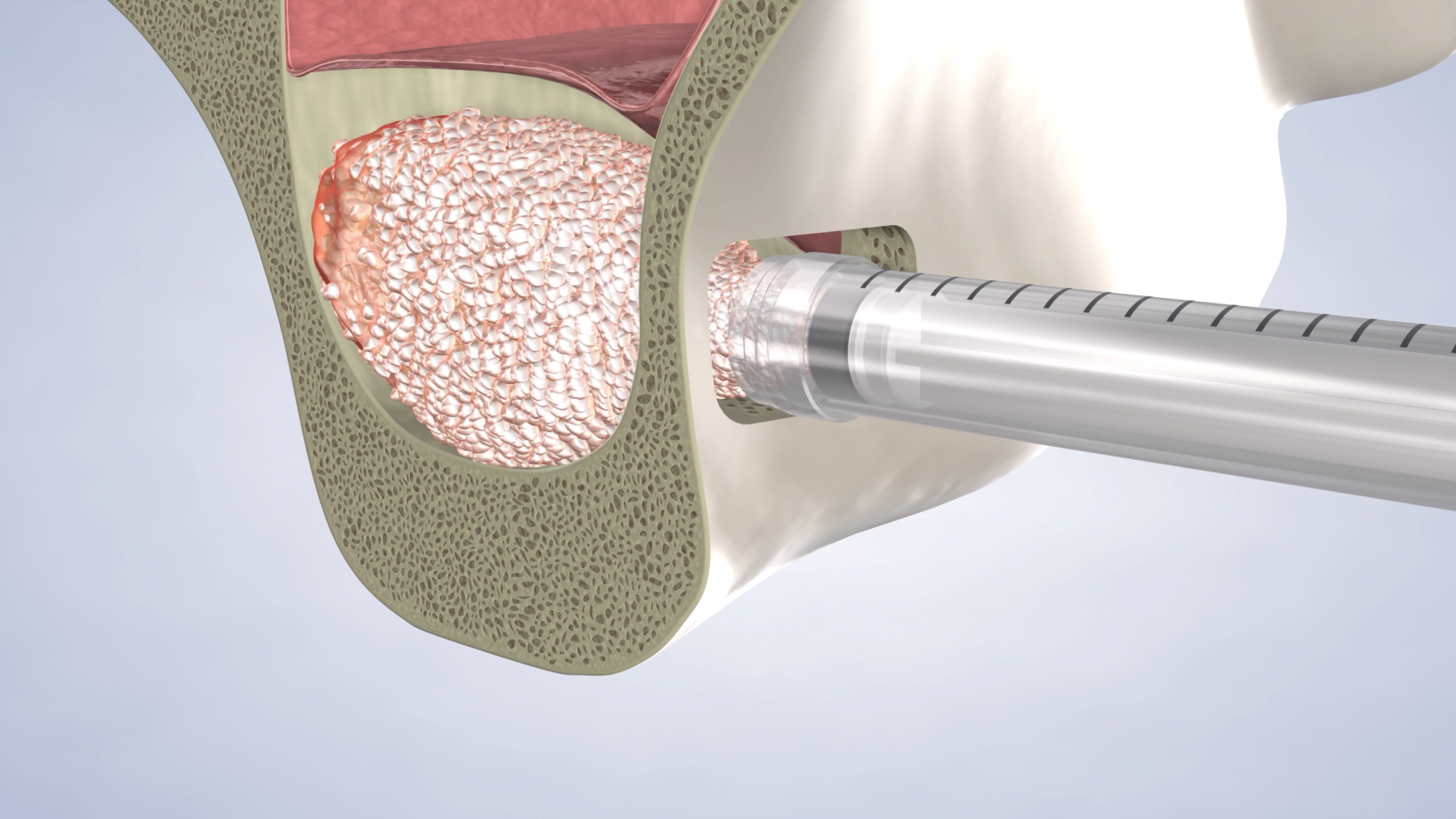Regrow Bone and Improve Oral Health
Bone grafting procedures restore bone that has been diminished or damaged because of missing teeth, atrophy, facial injuries and fractures, or other reasons. Many patients who wish to receive dental implants or other tooth replacement treatments require a bone graft to prepare their mouth and preserve the remaining bone in the upper and lower jaw.Dr. Ben Johnson, Dr. Sohaib Soliman, Dr. Hwi Sean Moon, Dr. Kevin Huang, and Dr. Michael Baily all have extensive surgical training and experience performing a variety of bone grafting procedures. If you want a non-removable solution to restore your missing teeth, or if you want to prevent bone loss after a tooth extraction, bone grafting may be a part of your treatment plan.
How Does Bone Grafting Work?
While there are many different types of bone grafting procedures, most treatments involve taking bone graft material and placing it in the areas that are lacking the right quality or quantity of bone. Bone grafting is a common procedure for patients who are missing a tooth or multiple teeth and whose jaw bones don’t receive proper stimulation for maintaining the correct shape. The bone grafting material is sourced from a tissue bank. After a brief healing period, the graft material will have completely integrated with the existing bone, creating a solid foundation for dental implants.
During your first visit, we may take 3D scans of your face and mouth to create detailed digital images. All of our offices are equipped with advanced technology that allows our team to accurately diagnose and treat a variety of health needs. Pacific Northwest Oral & Maxillofacial Surgeons also offers many anesthesia and sedation options to choose from during any type of procedure.
Types of Bone Grafting Procedures
Many bone augmentation procedures can help prepare your mouth for dental implant placement, preserve the bone after a tooth extraction, or restore facial bone that has been lost or damaged.
Socket Preservation
After a tooth is lost or extracted, a bone graft is placed into the empty tooth socket to expedite healing and preserve the site for a subsequent dental implant placement. Once the bone graft has healed properly and integrated with your natural bone, a dental implant can be placed to restore the missing tooth site.
Ridge Expansion
Dental implants require a certain height and width of bone for successful placement. If the bone that surrounds and holds the teeth (called the alveolar ridge) has deteriorated too much, your surgeon can perform a ridge expansion to allow for dental implant placement. In a typical ridge expansion procedure, the oral surgeon will divide the bony ridge, then fill the space between the bone segments with bone graft material, resulting in a wider, taller alveolar ridge.
Learn About Sinus Lifts in Auburn, Federal Way, Renton, Maple Valley, Puyallup, and Burien, WA

Sinus Lift
The sinuses, located on either side of the nose, are just above the upper molars. The bone separating the sinuses from the roots of the upper back molars is often very thin, which can make dental implant placement difficult. To safely place implants in the sinus region, we offer a sinus lift procedure, in which your surgeon will carefully lift the sinus and place a bone graft beneath it. The extra bone thickens the wall between the mouth and the sinus cavity, creating a stable base to secure the dental implants.
Nerve Repositioning
The nerve that gives feeling to the lower lip and chin (known as the inferior alveolar nerve) runs through the lower jaw. In rare cases, it is impossible to place dental implants or remove teeth without potentially damaging the nerve. To make room for your treatment, our surgeons can make a small opening in the bone to expose the nerve, then move it to the side. A bone graft will then be placed to cover the opening and keep the nerve in place.
Learn More About PRP in Auburn, Federal Way, Renton, Maple Valley, Puyallup, and Burien, WA

Platelet-Rich Growth Factors
Platelet-Rich Growth Factors (PRGF) can be used during treatment to stimulate healing and speed up the recovery process. PRGF is developed from platelets that already exist in the patient’s blood; Dr. Ben Johnson, Dr. Sohaib Soliman, Dr. Hwi Sean Moon, Dr. Kevin Huang or Dr. Michael Baily will take a small blood sample at the beginning of the procedure and apply the growth factors to the surgical site once the procedure is over. Patients who utilize this technique often experience a shorter recovery after their bone grafting procedure because PRGF provides three to five times the amount of growth stimulation, causing the graft to heal faster.
Bone Grafts in Auburn, Federal Way, Renton, Maple Valley, Puyallup, and Burien, WA
Pacific Northwest Oral & Maxillofacial Surgeons perform a variety of bone grafting procedures to better serve a wide variety of patients’ needs. Schedule a consultation at one of our Washington offices to find out how our highly skilled oral surgeons can improve your oral health.
Types of Anesthesia
There are three main types of anesthesia that we use at our practice:
Hear From Bone Grafting Patients
These patients can tell you about the firsthand experience undergoing bone grafting at our office.
Reviews From Our Bone Grafting Patients

Clyde
Bone Grafting
Patient
"Hi, my name is Clyde. I came to Ben Johnson for an extraction and a bone graft, and I live in Buckley, Washington. The staff is very accommodating. They put me at ease and said everything's going to be fine. Dr. Ben was wonderful. Came in and talked to me a little bit before the procedure, and he said, "Okay, time to go to sleep" and the next thing, I woke up and everything was fine. One of the best dentistry procedures I've ever had. Overall experience was great. Everything was good, and I just feel fine. I would highly recommend Pacific Northwest Oral and Maxillofacial Surgeons. They did a great job. Really appreciate it."

Jason
Bone Grafting
Patient
"Hi, I'm Jason. I'm from Bonnie Lake. I had a extraction, a bone graft, and a implant from Dr. Ben Johnson. When I walked into the practice, I felt very comfortable. It was very welcoming. Dr. Ben Johnson, very warm. He was pretty funny. Prior to the procedure, I did get some information. Very good at telling you what the next steps were and just keeping you informed over the process. My procedure went very well. I'm in recovery. I spent one day that day at home and then I was back, back to work the next day. The overall experience here for the procedure has been great. I feel very comfortable about coming here for any other procedure."

Shay
Bone Grafting
Patient
"I came here to Pacific Northwest Oral Surgeons to have a bone graft and an implant. I had a bike accident without a full-face helmet and lost two of my teeth. Dr. Johnson was available and able to help us out. The staff here made it super comfortable and talked me through the process and really set my mind at ease. Dr. Carl Johnson, he was great from the get-go. One look at him and his smile and you just know how much experience he has and what he brings to the table, and it actually was a very quick and easy process. The implant really did change my life for the better, so I just want to thank Dr. Johnson personally for everything he’s done for me and the extra special care he and his staff provided. It’s been great. "

Jack
Bone Grafting
Patient
"I was referred by my regular dentist. I've had a hole in one row of teeth since childhood, and he referred me to Dr. Johnson for teeth implants. Dr. Johnson is a very personable, pleasant fellow. I had a good time talking to him, and he's thorough, clear — he explained what's happening and what's going to happen very nicely — and I really didn't have any questions after talking to him. I'd recommend Dr. Johnson. I was pleased with him; I enjoyed talking to him. My procedure went very well. It was very smoothly and professionally done. No problems, no difficulties, no unusual pain; it was just very nice."

Brian
Bone Grafting
Patient
"Hi, I'm Brian from Covington, Washington. I came to Pacific Northwest Oral to get a couple of teeth extracted, a couple of bone grafts, and soon to get a new implant. The doctors and staff at Pacific Northwest Oral are great. Very friendly, very open. When I watched the videos explaining the extraction process, it gave me peace of mind. It was very easy to go in and get it done. My life has improved. My health has improved. Everything's gone smooth and great. I would recommend my friends and family to Pacific Northwest Oral. I knew it was the right place for me to go."
Schedule Your First Visit With Us
Contact Us





